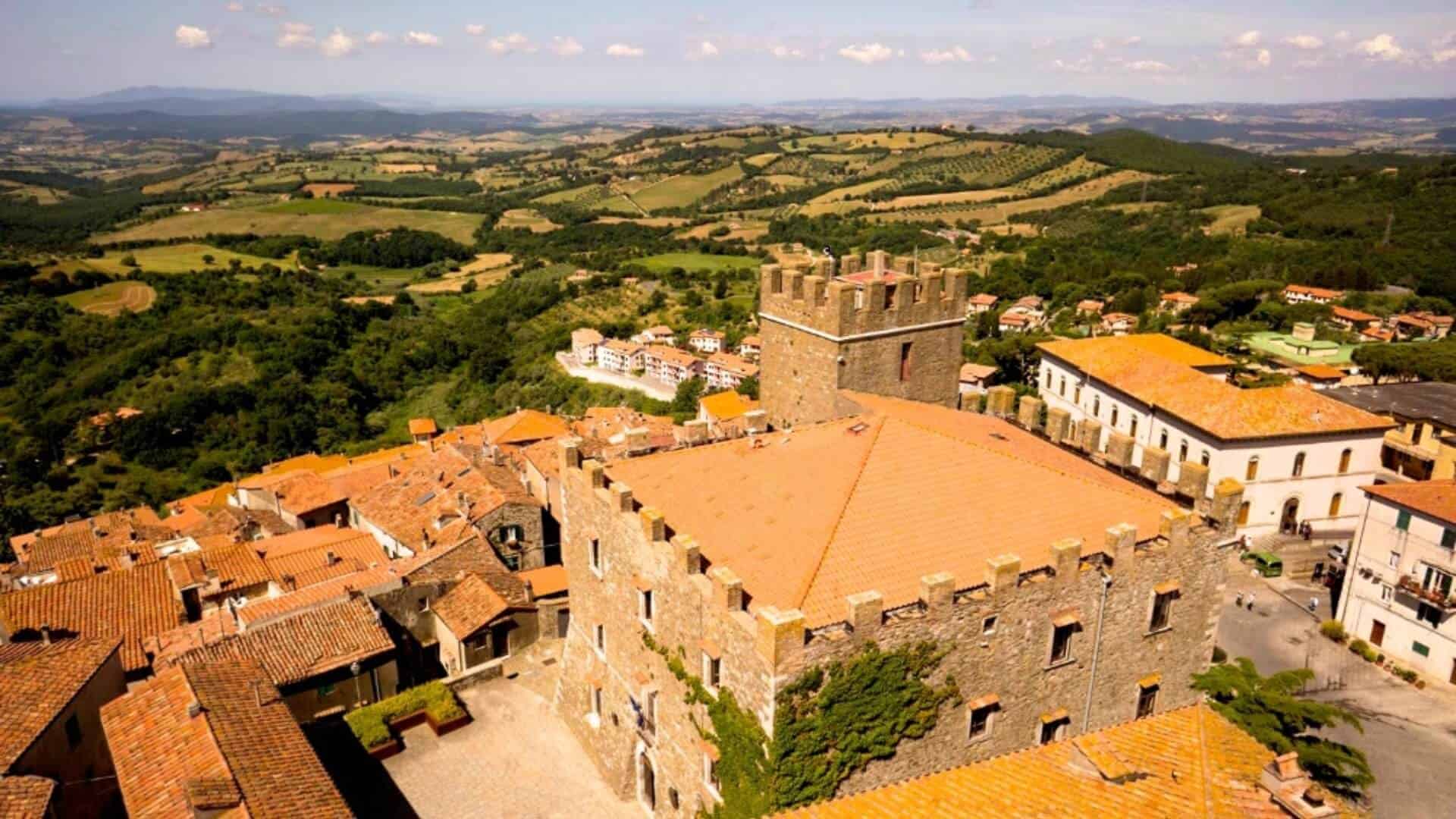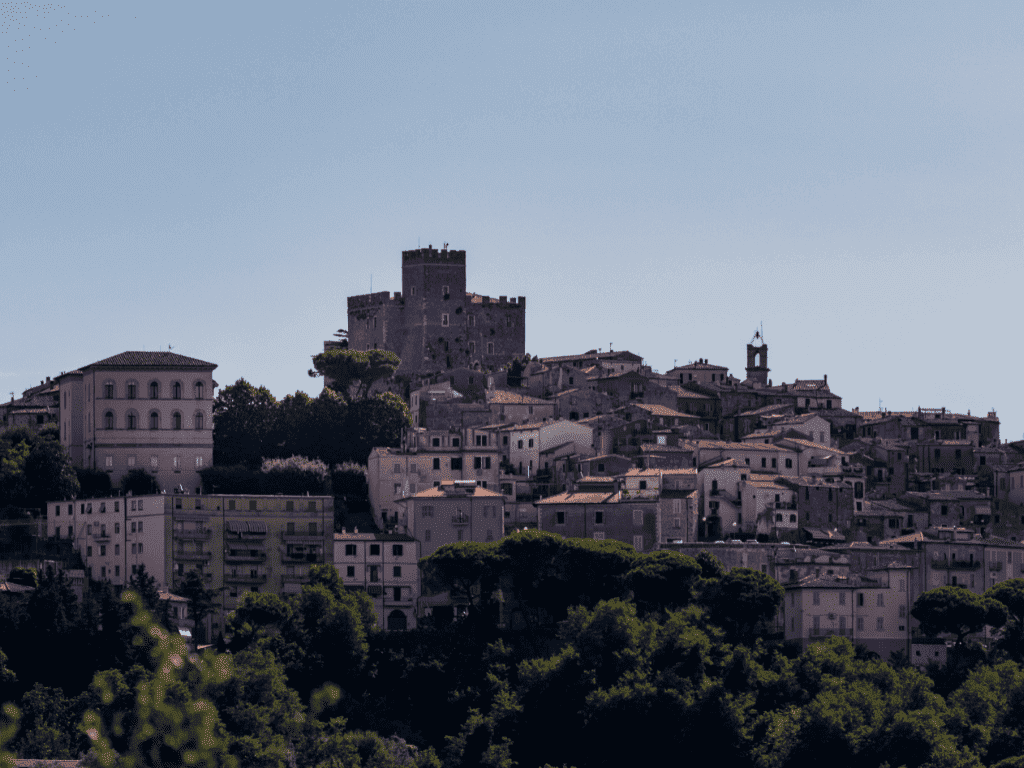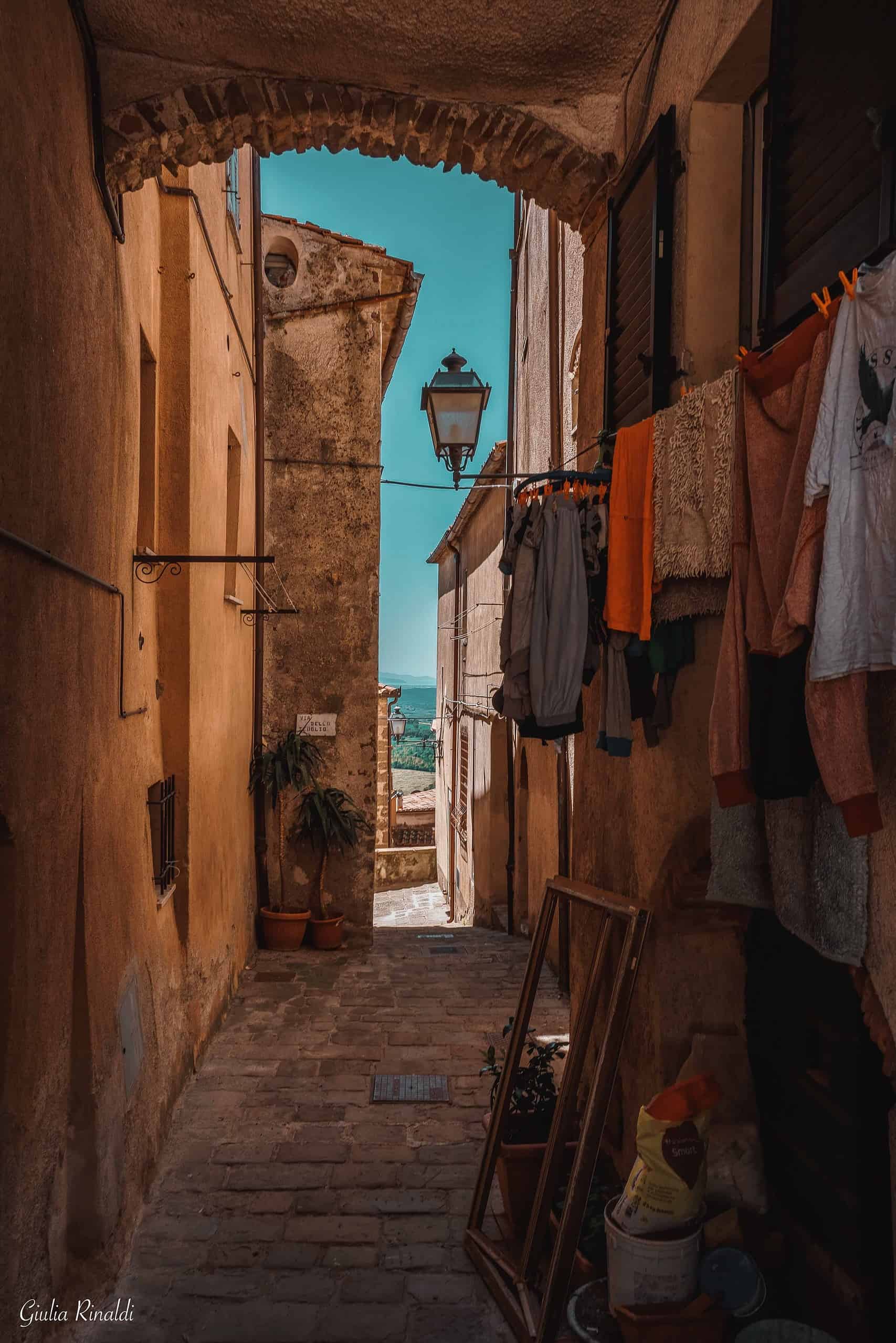THE VILLAGE WITH THE MOST BEAUTIFUL VIEW IN MAREMMA
Manciano is a charming village located in the heart of Tuscan Maremma, a place rich in history, natural beauty, and cultural traditions. Here’s everything you need to know about Manciano, from its places of interest, history, activities to do, museums, places to visit nearby, and how to get there.
Manciano stands on a hill overlooking the Albegna River valley. The village features a well-preserved medieval old town with narrow winding streets, stone houses, and breathtaking views of the surrounding countryside. Manciano offers a variety of accommodations, from hotels to agritourism, vacation homes, and campsites, as well as a range of restaurants and local producers where you can taste traditional Tuscan cuisine.
What to See in Manciano
The historic center of Manciano is a fascinating place to explore. Among the main points of interest are the Aldobrandesca Fortress, an imposing medieval fortress that now houses the Town Hall, and the Church of San Leonardo, a religious building of Romanesque origin. Don’t miss the opportunity to stroll through the village streets, admire the stone houses, and enjoy the views of the Tuscan countryside.
Events in Manciano
Manciano offers a variety of activities for all tastes. You can explore the historic center, hike in the surrounding countryside, visit local producers to taste typical products, or participate in one of the many events held in the village throughout the year. These events include the Festa delle Cantine in September, the Street Music Festival in the early summer months, the Palio delle Botti in August, and the food and wine event “Seguendo un filo d’olio” in December.
The Museum of Prehistory and Protohistory
The Museum of Prehistory and Protohistory of the Fiora River Valley in Manciano is a place where ancient history comes to life through technological innovation. This museum offers a unique multimedia experience: each explanatory panel is accompanied by a QR code that allows visitors to access additional information online and translations. Each room features a video that provides a chronological context and explains the peculiarities of the period under examination. Upon entry, visitors are provided with a tablet to make the most of the multimedia experience. The museum also offers the opportunity to visit a typical prehistoric hut through a 3D reconstruction. The exhibition covers a time span from the Paleolithic to the Late Bronze Age, with artifacts illustrating the history of the area from over half a million years ago. The museum is open at various times of the year with varying hours, and admission is free. A journey through the Museum of Prehistory and Protohistory of the Fiora River Valley is an immersive experience through time, allowing you to discover the rich history of this fascinating region.
What to See in the Surroundings of the Municipality of Manciano
In the surroundings of Manciano, within the municipal territory, there are two places of particular interest: Montemerano and Saturnia.
Montemerano is a charming village located on a hill between Saturnia and Manciano. Surrounded by the Maremman countryside and protected by three sets of city walls, it has preserved its medieval appearance with a beautiful church, a fortress, cobbled streets, and the characteristic Piazza del Castello surrounded by stone buildings. A peaceful stroll through alleys, small squares, and picturesque views with balconies overflowing with flowers is an experience not to be missed. The Church of San Giorgio, mentioned since 1382, is a gem of Romanesque art and houses an exceptional collection of Renaissance artworks, including the famous “Madonna della Gattaiola.”
Saturnia, on the other hand, is primarily known for its thermal baths. From the subsoil of Saturnia springs a hot sulfur water (37.5°C) that allows for particularly pleasant and healthful baths at any time of the year. In addition to the thermal baths, Saturnia offers unspoiled landscapes, numerous archaeological sites with the Etruscan necropolises of Puntone and the Via Clodia, highly appreciated traditional cuisine, and a golf course. Accommodation options are varied, with agritourism, hotels, bed and breakfasts to suit all tastes.
The History of Manciano
The history of Manciano, an important agricultural center in the Fiora Valley, is rich and fascinating, with traces dating back to prehistory. The first document mentioning Manciano dates back to 973, in a sales contract by Marquess Lamberto Aldobrandeschi. As a populated center, Manciano probably originated toward the end of the 13th century when the Aldobrandeschi began building the city walls and, before the mid-1300s, erected an imposing fortress that still bears their name. After Aldobrandeschi rule, Manciano was contested between the municipality of Orvieto and the Orsini counts of Pitigliano, and it was later ceded to the Republic of Siena in 1410. In 1416, Manciano was definitively attributed to the Orsini, who had to recognize the suzerainty of Siena. After 1555, with the annexation of the state of Siena to the Grand Duchy of Tuscany, Manciano became part of the magistracy of Saturnia and Capalbio. With the municipal reform of Pietro Leopoldo, Manciano, with its 700 inhabitants and a well-developed economy, became one of the largest and most important villages in the Grosseto Maremma.
How to Get to Manciano
Manciano is easily accessible by car. It is approximately a two-hour drive from Florence and Rome, and one hour from Grosseto. If you prefer to travel by train, the nearest railway station is Albinia, from where you can take a bus to Manciano.
Manciano is a place rich in history, natural beauty, and cultural traditions. Whether you’re a history enthusiast, a nature lover, a foodie, or just seeking a tranquil place to relax, Manciano has something to offer everyone. Don’t miss the opportunity to visit this charming village in the heart of Tuscan Maremma.




